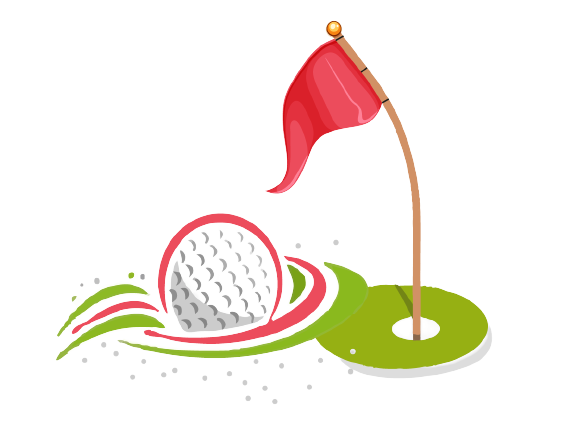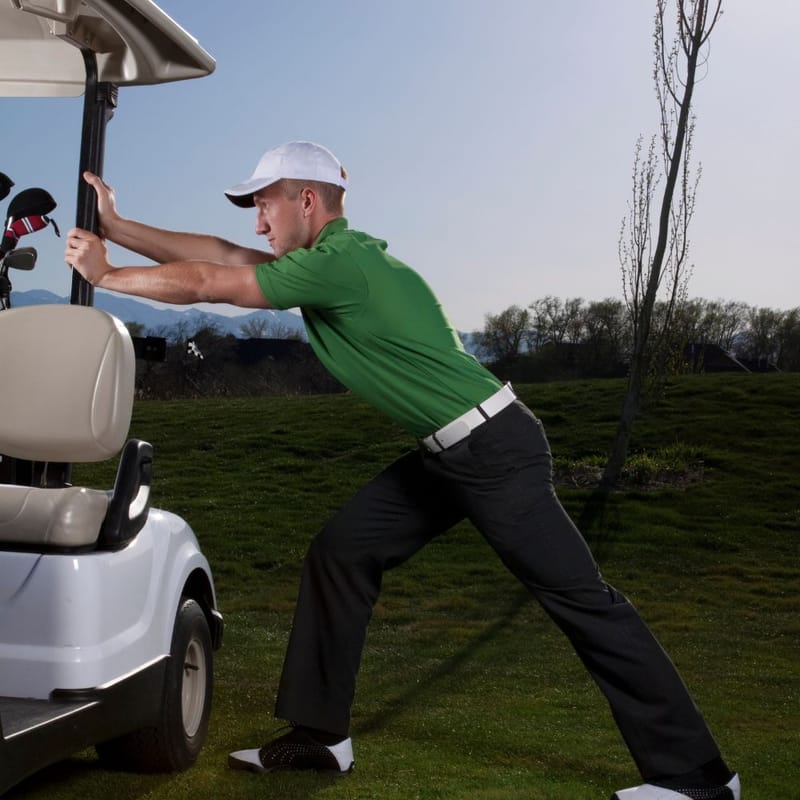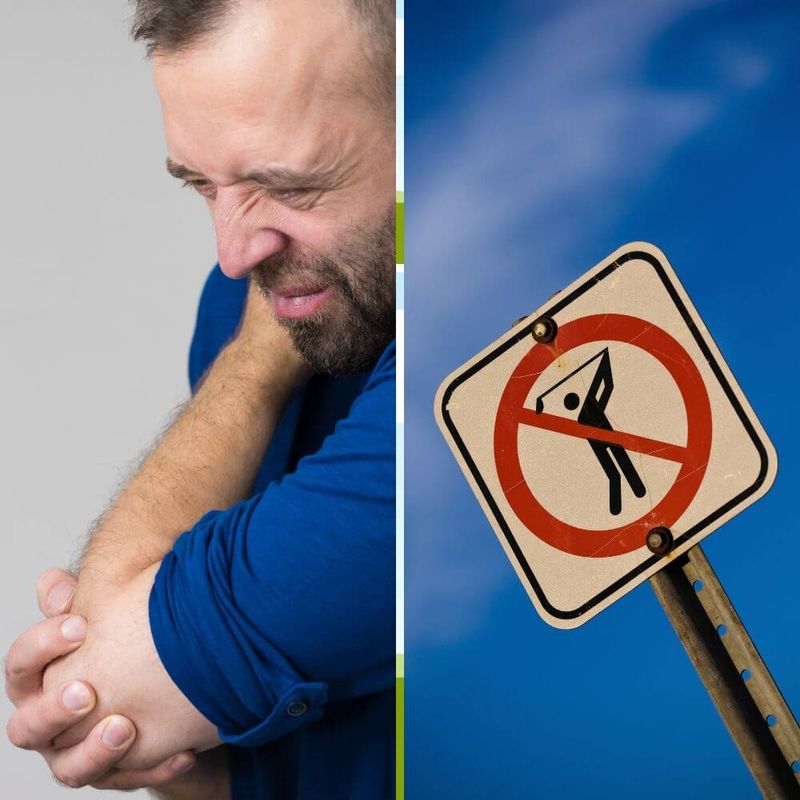Content Summary
Golf is a sport that requires skill, strategy, strength, flexibility, and balance to achieve the perfect swing. To be successful on the course, it is essential for golfers to have a strong core.
The core is often the most underdeveloped area in many golfers' bodies, yet it is crucial for their performance. A robust and flexible core, encompassing the abdominal, hip, glute, and lower back muscles, is essential for executing a powerful and precise golf swing.
Many of these golf-specific exercises can be performed anywhere, so don't hesitate to incorporate them into your routine.
Core exercises are an excellent way to increase your strength and power while decreasing the risk of injury. Developing your core muscles can also make your game more efficient and consistent.
Through strengthening your core, you will be able to generate more power and accuracy with your shots and allow keeping your arms extended during the swing.
Benefits of Core Exercises
Core exercises are essential for any golfer looking to improve their game and increase performance levels.
Core strength and stability are key components in powering a golf swing, as well as providing the body with balance and stability during the rest of the round.
Golfers can benefit from incorporating core exercises into their routine not just for improved on-course performance, but also for overall health benefits.
In addition to increased power through a more effective golf swing, golf core workouts can help improve posture, reduce back pain, strengthen your lower back muscles and abdominal muscles, promote flexibility which translates into better balance throughout a round of golf, and reduce risk of injury by increasing muscle endurance.
Strengthening your core will also help you stay focused on each shot since it will help limit fatigue in your arms that could lead to inconsistent swings during long rounds.
Golf Specific Core Movements
Golf Core Exercises are a great way to improve your game and enhance your performance on the green. For those of you who have been looking for something more specific in terms of core exercises, golf-specific movements are the perfect solution.
These targeted exercises help strengthen the muscles needed for a powerful swing and can help reduce fatigue during play.
When it comes to golf-specific core exercises, there is no limit to what you can do—from dynamic stretches to rotational exercises and balance drills.
Each drill helps build strength and stability which is key for improving power, consistency, accuracy and endurance while out on the course. Not only that, but these specialized moves increase flexibility which enhances overall body movement throughout the swing sequence.
These structured movements are designed with an end goal in mind: increased performance on the links.
Strengthening & Balance Exercises
Golfers of all levels can benefit from strength and balance exercises that focus on the core. Strong core muscles are essential for powering long golf shots, so it's important to give them some extra attention.
Core-strengthening exercises are especially helpful for seniors, who may need more stability and power in order to hit the ball farther. Luckily, these exercises don't require any equipment such as a cable machine– they can be done anywhere!
Some of the best core exercises for golfers include squats, planks, crunches and lunges. Squats help build leg and back strength while improving balance, remember to keep your feet spread slightly wider. Meanwhile, planks work your abdominal muscles without straining your back or neck.
Crunches target your rectus abdominis (the muscle responsible for rotation) while lunges help strengthen hip flexors which are key when you're swinging a golf club.
Plyometric Drills
Plyometric drills are a great way to add an extra layer of strength and power development to any golf core exercise program. They involve using maximum force in short periods of time, which is beneficial for improving club speed and swing stability.
Plyometric drills can help golfers hit the ball farther and make more consistent swings which leads to better shot accuracy on the course.
Plyometric drills primarily target the abdominal muscles, hips, quads, hamstrings, calves, shoulders and arms — all important areas for golfers looking to improve their game. These exercises use motions that require explosive jumping movements such as lateral bounds or single-leg hops.
Other popular plyometric exercises include step jumps, box jumps and depth jumps — all providing an intense workout designed to increase your power output while refining your coordination skills at the same time.
Inverted Hamstring Stretch
The inverted hamstring stretch is an effective exercise to enhance flexibility and stability in the posterior chain, which includes the hamstrings, glutes, and lower back muscles.
To perform this stretch, begin by standing tall with your feet hip-width apart and your arms by your sides. Slowly shift your weight to one foot, and as you do so, lift the opposite leg behind you while keeping it straight.
Simultaneously, hinge forward at the hips, lowering your torso toward the ground, and extend your arms outward for balance.
Maintain a straight line from the raised heel to the top of your head, ensuring your hips remain square and parallel to the floor. Hold this position for a few seconds, feeling the stretch in your hamstring and glute muscles, before slowly returning to the starting position.
Repeat the stretch on the other leg, and incorporate multiple repetitions into your routine for optimal results. This exercise not only improves flexibility, but also helps to build balance and coordination, essential for a strong and consistent golf swing.
Abdominal Exercise Tips
Abdominal exercises are a vital part of any golfer's routine. Strengthening the core can improve balance, posture, and mobility on the course. I prefer doing the plank position exercise (including the full side plank position) and find it helps build my core strength for better control of my swing.
As a starting position, one should focus on strengthening the transverse abdominis (TVA) muscle. This is the primary stabilizing muscle of your midsection and helps support your lower back during swing motions.
Additionally, it serves as a protective layer against possible lower back injuries caused by swinging too hard or over-rotating your torso during swings. Planks and side planks are two great exercises to target this area of your core muscles.
Rotational Training
Rotational Training is an important part of preparing for success on the golf course. Rotational exercises can help to improve your core strength and flexibility, which is essential for a successful golf swing.
By incorporating rotational training into your regular routine, you can improve your overall power, stability and balance - all of which are key elements in an effective golf game. A stability ball and/or medicine ball are great additions to rotational exercises.
Whether you’re a beginner or experienced golfer, rotational training will give you the resources to make better shots with more consistent contact.
With regular practice of these exercises, you can develop strong muscles throughout your upper body that will help you generate more club head speed and distance off the tee.
Furthermore, rotational training incorporates lower body training exercises for increased muscles and power during swings and follow throughs.
Conclusion
A golf fitness program can provide core power, improved performance and strength. A strong core can provide golfers with an advantage as it helps to increase power and accuracy in their swings with proper golf posture. Core exercises are a great way to improve your game by strengthening your trunk muscles.
These golf core exercises can be done anywhere and require minimal equipment. Whether you are a beginner golfer or an experienced one looking for more power, learning some key core exercises can help you take your game to the next level.
It's important to remember that an important part of overall health is to also stay hydrated during the course of a round.
Thank you for visiting and we hope to see you back soon!
Note: We use affiliate links and may receive a small commission on purchases at no additional cost to you.






